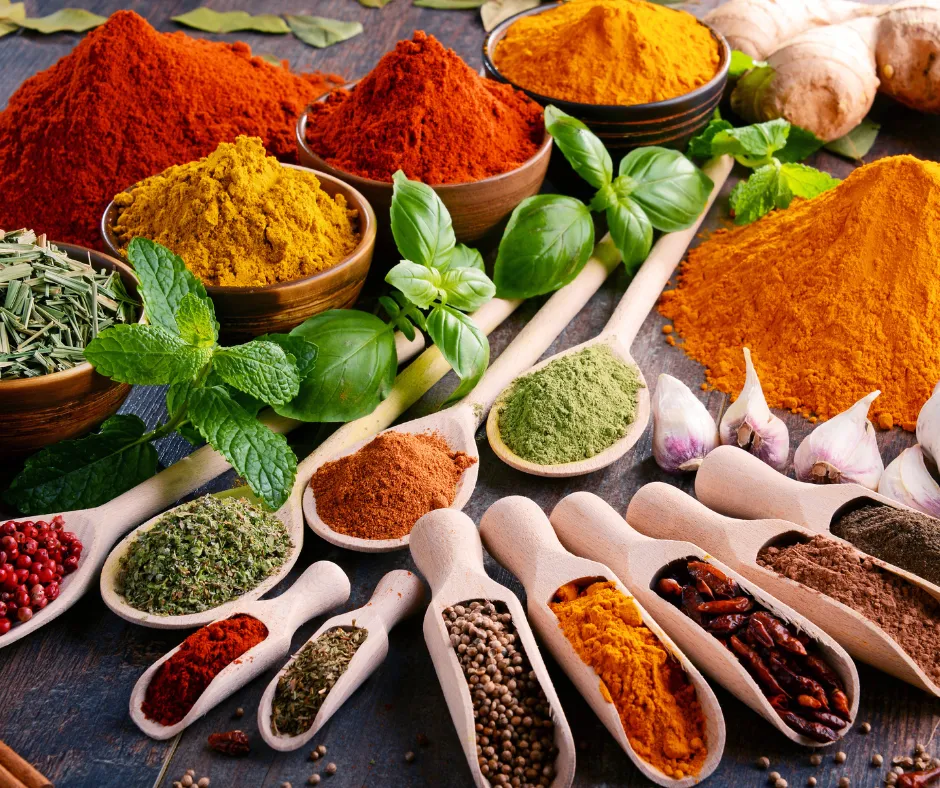Herbs: Usually the leafy part of a plant (fresh or dried).
Spices: Usually the seeds, bark, roots, or fruits (typically dried)
🌿 Common Herbs:
Herb Flavor Profile Best With Basil Sweet, peppery Tomatoes, pasta, pesto Thyme Earthy, subtle Chicken, potatoes, stews Rosemary Pine-like, strong Lamb, roast potatoes, breads Parsley Fresh, mild Salads, soups, garnishes Coriander (Cilantro) Fresh, citrus Mexican, Asian dishes Dill Light, grassy Fish, pickles, eggs Oregano Warm, slightly bitter Pizza, Italian sauces
Section 2: How to Use Them 1️⃣ Fresh Herbs
Add at the end of cooking for bright flavor.
Can be used as garnish.
Store in fridge, wrapped loosely in damp paper towel.
2️⃣ Dried Herbs
Add earlier in cooking to allow flavors to release.
Use 1/3 the amount of fresh herbs (dried are more concentrated).
3️⃣ Spices
Bloom spices: heat them briefly in oil to release flavors.
Toast whole spices for extra depth.
Grind whole spices for maximum freshness.
Section 3: Flavor Pairings Here are some easy combinations to start with:
Italian: Basil + Oregano + GarlicIndian: Cumin + Coriander + Turmeric + Garam MasalaMexican: Cumin + Chili Powder + OreganoMiddle Eastern: Sumac + Za’atar + CinnamonAsian: Ginger + Garlic + Star Anise + Five Spice
Section 5: Tips and Tricks
Taste as you go. Herbs and spices are powerful; start small and build up.Fresh vs dried: Fresh herbs give brightness, dried add depth.Storage: Keep spices in a cool, dark place — not above the stove.Experiment: Try a small amount of a new spice in a familiar dish.
Section 6: Mistakes to Avoid
Overpowering with too much spice
Adding delicate herbs too early
Using old, stale spices (replace after ~1 year)
Not balancing flavors (sweet, salty, sour, bitter, umami)
